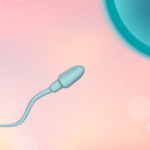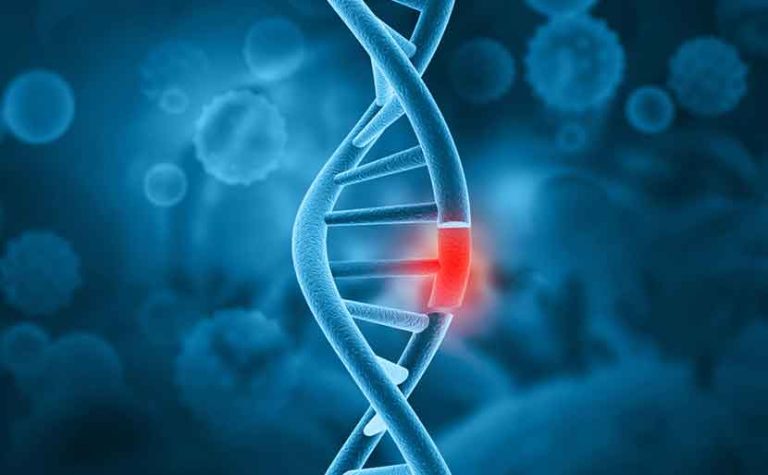Learn about Smith-Magenis Syndrome, its causes, symptoms, and the testing options available at Hiro Clinic NIPT. Ensure your baby's health with advanced prenatal testing.
Summary of this article
Smith-Magenis syndrome is a disorder caused by abnormalities in the Retinoic Acid Induced 1 (RAI1) gene located at 17p11.2 on chromosome 17. The characteristic physical features include a short head, prominent forehead, synophrys (unibrow), prominent jaw, and short fingers. Symptoms include sleep cycle disturbances, self-injurious behavior, and intellectual disabilities. It is a relatively rare condition, occurring in approximately 1 in 15,000 to 1 in 25,000 people. There is currently no established fundamental treatment.
What is Smith-Magenis Syndrome?
Smith-Magenis Syndrome is a disorder caused by abnormalities in the Retinoic Acid Induced 1 (RAI1) gene located at 17p11.2 on chromosome 17. The disease is caused by deletions in the gene (where the gene is cut off midway) or mutations in the gene sequence, resulting in the RAI1 gene not functioning properly and causing various symptoms throughout the body.
Characteristic physical features include a short head, prominent forehead, synophrys (unibrow), prominent jaw, and short fingers. Symptoms include sleep cycle disturbances, self-injurious behavior, and intellectual disabilities. Additionally, the majority of patients exhibit delayed language development and heart disease.
The frequency of Smith-Magenis Syndrome is estimated to be 1 in 15,000 to 1 in 25,000 people, making it a relatively rare disorder. In Japan, the number of patients is estimated to be around 30 to 50. It is designated as a specified rare disease and is included in the list of pediatric chronic specific diseases in Japan.

When is Smith-Magenis Syndrome detected?
If a pregnancy is confirmed by an ultrasound examination, NIPT (Non-Invasive Prenatal Testing) can be used to determine Smith-Magenis Syndrome. However, not all facilities that offer NIPT can conduct this test. Additionally, for a definitive diagnosis, an amniocentesis or postnatal genetic testing is necessary.
Causes of Smith-Magenis Syndrome
The cause of Smith-Magenis Syndrome is the partial deletion (known as “microdeletion” in genetic terms) or mutation (known as “mutation” in genetic terms) of a specific region on the short arm (short arm (p)) of chromosome 17, referred to as 17p11.2. This region contains a gene called Retinoic Acid Induced 1 (RAI1), and abnormalities in the chromosome lead to a decrease in the function of the RAI1 gene.
Human genes come in pairs, and even if one gene is abnormal, the other normal gene can compensate for the function, resulting in no symptoms. However, in the case of the RAI1 gene, if one gene is abnormal and only one normal gene remains, it cannot perform its normal function, leading to symptoms. This is referred to as “haploinsufficiency” in genetic terms.
The RAI1 gene has a role in regulating the expression (activity) of other genes, particularly those involved in the body’s daily rhythms (circadian rhythms) such as sleep and wakefulness. This regulation is believed to be the cause of the sleep disorders characteristic of this syndrome. Additionally, RAI1 is thought to be involved in the development of the brain, head, and facial bones, though many aspects of its function remain unclear.
These chromosomal abnormalities usually occur spontaneously due to sudden mutations, making it very rare for Smith-Magenis Syndrome to be inherited from parent to child or for there to be a family history of the syndrome. However, there are reports of the condition arising from parental genetic abnormalities, so the possibility is not zero.
Symptoms and Characteristics of Smith-Magenis Syndrome
Main Symptoms
Smith-Magenis Syndrome presents a variety of symptoms. These symptoms can be broadly categorized into physical characteristics, behavioral characteristics, and intellectual disabilities.
Physical Characteristics
Distinctive Facial Features
In Smith-Magenis Syndrome, the following facial characteristics are observed:
- Short head
- Prominent forehead
- Prominent lower jaw
- Unibrow
- Low-set ears
- Deep-set eyes
These facial features are not very pronounced in infancy but gradually become more apparent as the individual grows into adulthood.
Additionally, hypotonia (decreased muscle tone) in infancy and short, broad hands are also noted as physical characteristics of Smith-Magenis Syndrome.
Behavioral Characteristics
Behavioral symptoms are the main symptoms of Smith-Magenis Syndrome, and specifically include the following symptoms. These behavioral symptoms are not evident in infancy, but they start to appear in early childhood and change as the individual grows.
- Sleep disturbances such as hypersomnia or insomnia
- Mood swings
- Hyperactivity and impulsivity
- Anxiety
- Self-injurious behaviors (e.g., head banging, skin picking)
- Stereotypic behaviors (e.g., self-hugging, licking fingers to turn pages)
Intellectual Disabilities
The majority of patients exhibit intellectual and developmental disabilities, such as delayed language development.
Main Complications
In addition to the previously mentioned physical and behavioral characteristics, various complications can occur in multiple organs. The most common complications are as follows:
- Hearing impairments and otolaryngological abnormalities such as otitis media
- Ophthalmological abnormalities such as strabismus
- Congenital heart disease
- Short stature
- Scoliosis
- Endocrine disorders
- Renal abnormalities
- Brain malformations
Diagnosis of Smith-Magenis Syndrome
Smith-Magenis Syndrome is generally diagnosed after birth when symptoms and genetic testing reveal microdeletions or mutations in chromosome 17, including the RAI1 gene.

One of the “Microdeletion Syndromes” Detectable by Hiro Clinic NIPT
Recently, advancements in genetic testing technology have made it possible to detect genetic disorders during pregnancy using a method called NIPT (Non-Invasive Prenatal Testing). Smith-Magenis Syndrome is one of the microdeletion syndromes that can be screened by Hiro Clinic NIPT.
Microdeletion syndrome is a disorder caused by the deletion of genes at specific locations on a chromosome. The size of these deletions is said to start from as small as 500,000 base pairs* and usually involves deletions of 2 to 3 million base pairs. The diverse symptoms and varying severity of the syndrome depend on the size and location of the deletion, but all cases include developmental delays such as intellectual disability. Additionally, most cases of microdeletion syndromes occur spontaneously and are not related to the age of the mother.
*Base pairs: The primary components that make up DNA. The base components of DNA are four types: Adenine (A), Thymine (T), Guanine (G), and Cytosine (C).
Treatment of Smith-Magenis Syndrome
For Smith-Magenis Syndrome, there is no established fundamental treatment yet. The primary treatment approach is symptomatic therapy for physical symptoms, behavioral symptoms such as sleep disturbances and self-injurious behavior, developmental disabilities, and complications. Due to the wide range of symptoms affecting the entire body, various medical departments collaborate to address each symptom.
Prognosis and Life Expectancy of Smith-Magenis Syndrome
Regarding the prognosis of Smith-Magenis Syndrome, there is no clear data yet, but some individuals have been known to live beyond 80 years. It is believed that if there are no organ abnormalities, the prognosis may be similar to that of other developmental disorders.
Conclusion
Smith-Magenis Syndrome is a chromosomal disorder caused by the deletion of the RAI1 gene located at 17p11.2 on chromosome 17.
Recently, NIPT (Non-Invasive Prenatal Testing) has made it possible to detect the presence of disorders before birth. However, not all facilities that offer NIPT can test for Smith-Magenis Syndrome.
At Hiro Clinic NIPT,
- Smith-Magenis Syndrome
- DiGeorge Syndrome
- 1p36 Deletion Syndrome
- Wolf-Hirschhorn Syndrome
You can test for four types of microdeletion syndromes. If you have had abnormalities in previous pregnancies or have had repeated miscarriages and are concerned about genetic disorders in your baby, you may want to consider testing.
【References】
- Children’s Chronic Specific Disease Information Center – Smith-Magenis Syndrome
- Genetic Disorders Plus – Smith-Magenis Syndrome
- GeneReviews Japan – Smith-Magenis Syndrome
Learn about Smith-Magenis Syndrome, its causes, symptoms, and the testing options available at Hiro Clinic NIPT. Ensure your baby's health with advanced prenatal testing.
Article Editorial Supervisor

Dr. Keizo Nitta
Director, Hiro Clinic Sapporo Station Clinic
With the increasing trend of advanced maternal age at childbirth, the demand for NIPT (Non-Invasive Prenatal Testing) is on the rise. Moreover, we anticipate that in the future, the accuracy and scope of NIPT will continue to expand. At our clinic, we believe it is our obligation to appropriately communicate the information that can be known and desired in current medical practice to expectant mothers.
Alongside the right to know, there also exists the right not to know. We consider it a medical duty to refrain from disclosing information that the patient does not wish to know. At our clinic, you have the option to choose the information you want to know.
We encourage you to consult with us to determine which plan is best for you and to select the testing that suits your needs.
Career Summary
1996 Saitama Medical University Hospital
2002 Kanagawa Children’s Medical Center
2004 Kokumin Kyosai Yokohama Minami Kyosai Hospital
2010 Yokosuka Municipal Uwamachi Hospital
2012 Municipal Mikasa General Hospital
2015 Medical Corporation Ryokuryokai Nagunuma Pediatrics
2019 Town Minami Horo Hospital (National Health Insurance)
Qualifications
Member of the Allergy Society
Member of the Pediatric Allergy Society
 中文
中文






















